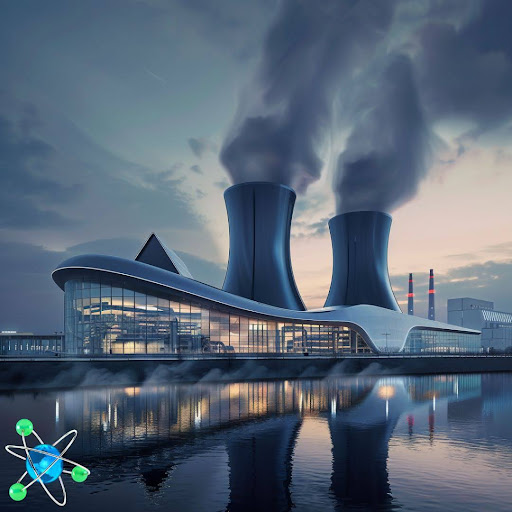
- Nuclear Integration for Data Centers: Rian Bahran’s keynote at Data Center World 2024 highlighted the growing role of nuclear power, including SMRs, in providing reliable, clean energy for data centers, addressing the increasing power demands from AI technologies.
- Economic and Environmental Benefits: The renewed focus on nuclear energy, bolstered by the Inflation Reduction Act, supports grid stability, job creation, and emissions reduction, while preventing the closure of existing nuclear plants and extending their operational life.
- Security and Sustainability: Ensuring cybersecurity and physical safety of nuclear facilities is crucial, alongside securing a stable nuclear fuel supply, to sustain the long-term integration of nuclear power in the energy mix for data centers.
Two years ago, nuclear energy was often excluded from discussions about future energy solutions. However, this perspective has shifted dramatically. At Data Center World 2024, Rian Bahran, Ph.D., Assistant Director of the White House Office of Science and Technology Policy, emphasized the evolving definition of clean energy to include nuclear power. This change is reversing the trend of closing nuclear facilities and increasing advocacy for onsite nuclear power in large data centers.
Bahran highlighted the significant energy consumption of data centers, which account for 1-2% of the annual US energy usage, with even higher consumption in major metropolitan areas. The growing pressure on the power grid, coupled with the hefty energy demands driven by AI, necessitates finding new, efficient, and sustainable ways to power data centers. Nuclear power is emerging as a viable solution. For instance, Amazon Web Services (AWS) has acquired a 1,200-acre data hub known as the Cumulus data center campus in Berwick, PA, directly connected to the 2.5 GW Susquehanna Steam Electric Station. This existing 48 MW data center will be expanded to as much as 960 MW, supported by a long-term energy supply agreement with Talen, the plant’s owner.
Bahran argued that while wind and solar energy are crucial for decarbonization, a stable and firm nuclear backbone is essential. Nuclear and renewable energies complement each other, with nuclear being the only proven technology that provides consistent and clean energy. One innovative approach is the introduction of small modular reactors (SMRs), which can generate an average of 77 MW each. These reactors offer benefits such as small footprints, enhanced safety, improved seismic capabilities, and long intervals between refueling—up to eight years.
The enthusiasm for SMRs is palpable, with approximately 2 GW of new nuclear capacity from these reactors scheduled to begin construction over the next five years. Data center operator Standard Power plans to deploy up to two dozen SMRs across campuses in Ohio and Pennsylvania. These reactors, using technology from NuScale Power, which has received design approval from the Nuclear Regulatory Commission (NRC), represent a new frontier in nuclear energy application. Similarly, NE Edge plans to build a large data center campus adjacent to a Dominion Energy nuclear plant in Connecticut, highlighting the growing trend of co-locating data centers with nuclear facilities.
Despite decades of decline, the US nuclear fleet still supplies 20% of the nation’s electricity. Extending the operational life of existing plants and preventing further closures is a vital interim strategy while new nuclear technologies like SMRs are being developed and deployed. The Inflation Reduction Act and various state-level initiatives have made nuclear plants more economically competitive, aiding in the revitalization of facilities such as the Palisades nuclear plant in Michigan. A $1.5 billion commitment is being used to recommission the Palisades plant, which ceased operations in May 2022 due to a lack of funding for upgrades. With licensing approval from the NRC and long-term power purchase agreements with local utilities, the plant is set to resume operations, producing baseload clean power until at least 2051. Additionally, Holtec, the plant’s owner, plans to add two SMRs to the site, potentially increasing its capacity by 800 MW.
Bahran envisions a future where several data centers might share the output of a single SMR to achieve economies of scale. While larger operators like AWS may adopt their own SMRs, smaller data centers could benefit from a shared model. He also underscored the safety and security advantages of modern nuclear technology, which can safely shut down in the event of a power loss. However, the security of these facilities, both physical and cyber, remains a critical concern.
Securing the supply of uranium and expanding US nuclear fuel sources is another essential aspect of this nuclear resurgence. Investments are being made to ensure a robust supply chain for a nuclear-powered future.
In summary, Bahran’s keynote underscores a significant policy shift and a renewed embrace of nuclear energy. This shift is essential for meeting the growing energy demands of data centers and supporting broader goals of decarbonization and grid stability. Nuclear energy, once sidelined, is now recognized as a vital component of the clean energy landscape.
